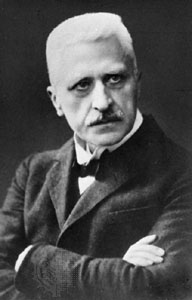In Idea of the Holy, a book published early the last century, author Rudolf Otto, a German philosopher of phenomenology, made some observations about what he termed the "holy." By holy, Otto was thinking of what we might call the "noumenal" or "non-rational," a realm beyond normal sensibilities. Put another way, the holy is a name given to a "somethingness" that we believe is there but which we cannot necessarily prove, empirically, anyway, actually is. It is, to use a perhaps overworked term these days, an "oceanic" feeling, a feeling that transcends all others. And it's real.
Otto went on to say that, in general, this "holy" provokes two general responses. One, fascination. Two, dread. We are fascinated by the holy. We are fascinated by its mystery, its intimation of power that we cannot fully conceive or control, its ability to capture our imagination as nothing else can. Conversely, such intense fascination evokes a profound sense of dread. Though we are drawn to the holy, we are also in awe of it. We cower before it. We do not understand it fully. It's frightening.

Ironically, as Otto pointed out, it is the holy's dread that is its fascination. We are drawn to it precisely because it frightens us. It's a fright of compulsion, a fascination of fear: an urgency of need.
In other words, if we are to believe in a factual supernatural, we must accept paradox: that which is most compelling is also that which is most frightening. Otherwise, it would be neither.
No comments:
Post a Comment